Which of the following results in osteoporosis?
An increase in osteocyte activity while osteoclast activity continues at expected levels.
decline in osteoclast activity while osteoporosis activity reduces
An increase in osteocyte activity while osteoblast activity reduces.
A decline in osteoblast activity while osteoclast activity continues at expected levels.
Correct Answer : D
A decline in osteoblast activity while osteoclast activity continues at expected levels results in osteoporosis.
Osteoporosis is caused by an imbalance between the functioning of osteoclast and osteoblast cells.
Osteoblasts are responsible for forming new bone, while osteoclasts break down old bone.
If osteoblast activity declines while osteoclast activity continues at expected levels, this means that more bone is being broken down than is being formed, leading to a loss of bone density and an increased risk of osteoporosis.
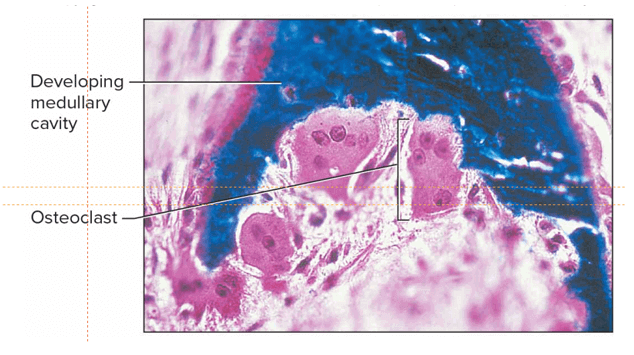
Choice A is incorrect because an increase in osteocyte activity would not result in osteoporosis.
Osteocytes are mature bone cells that maintain the mineral concentration of the bone matrix.
Choice B is incorrect because a decline in osteoclast activity would not result in osteoporosis.
Osteoclasts break down old bone, so a decline in their activity would mean that less bone is being broken down.
Choice C is incorrect because an increase in osteocyte activity would not result in osteoporosis.
As mentioned earlier, osteocytes are mature bone cells that maintain the mineral concentration of the bone matrix.
TEAS 7 Exam Quiz Bank
HESI A2 Exam Quiz Bank
Find More Questions 📚
Teas 7 Questions: We got the latest updated TEAS 7 questions
100% Money Refund: 100% money back guarantee if you take our full
assessment pass with 80% and fail the actual exam.
Live Tutoring: Fully customized live tutoring lessons.
Guaranteed A Grade: All students who use our services pass with 90%
guarantee.
Related Questions
Correct Answer is C
Explanation
A tsunami is a catastrophic ocean wave that is usually caused by a submarine earthquake.
It can also be caused by an underwater or coastal landslide, the eruption of a volcano, or the impact of a meteor or comet in a body of water.
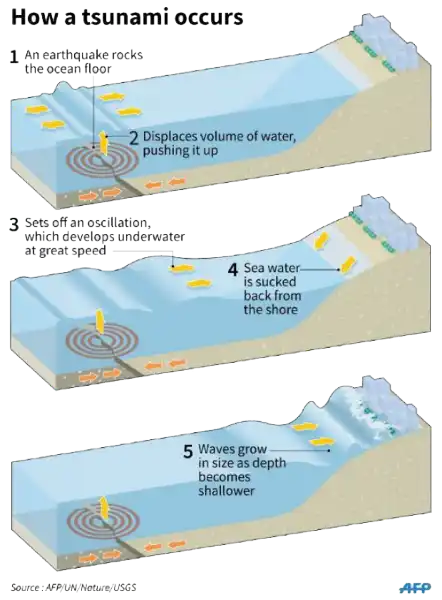
Choice A is not correct because sunspot activity does not cause tsunamis.
Choice B is not correct because lightning strikes do not cause tsunamis.
Choice D is not correct because flooding does not cause tsunamis.
Correct Answer is B
Explanation
The hypothalamus is a small region of the brain located just above the brainstem. It serves as a critical control center for maintaining homeostasis — the body’s internal balance. One of its key roles is regulating core body temperature through a process called thermoregulation.
The hypothalamus monitors the body's temperature using temperature-sensitive neurons. If the body becomes too hot or too cold, the hypothalamus initiates responses to bring the temperature back to a normal range by:
- Triggering sweating to cool down the body.
- Initiating shivering to generate heat.
- Adjusting blood flow to the skin for heat loss or retention.
In addition to temperature regulation, the hypothalamus also controls other vital functions like:
- Hunger and thirst
- Sleep-wake cycles
- Hormone release (by influencing the pituitary gland)
- Stress response
Why the Other Options Are Incorrect:
- A. Pituitary gland: While the pituitary gland is known as the “master gland” because it controls other endocrine glands, it does so under the direction of the hypothalamus. It does not directly regulate body temperature.
- C. Adrenal gland: The adrenal glands produce hormones like cortisol and adrenaline, primarily involved in the stress response, not temperature regulation.
- D. Pancreas: The pancreas is mainly responsible for regulating blood sugar levels through insulin and glucagon, not body temperature.
Thus, the hypothalamus is the part of the endocrine system most responsible for maintaining homeostasis, including regulating core body temperature.
Correct Answer is A
Explanation
The approximate threshold value for mammalian neurons is -55 mV.
The threshold potential is the critical level to which a membrane potential must be depolarized to initiate an action potential.
Most often, the threshold potential is a membrane potential value between –50 and –55 mV
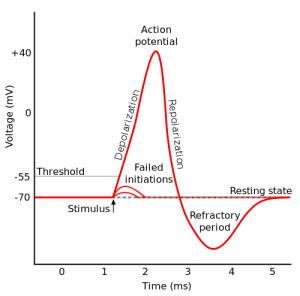
The membrane potential of a neuron is determined by the distribution of ions across the cell membrane.
At rest, the inside of a neuron is more negative than the outside due to the presence of negatively charged proteins and other molecules.
The movement of ions across the cell membrane can change the membrane potential.
For example, when sodium ions enter the cell, they make the inside of the cell more positive (less negative), causing depolarization.
Choice B is incorrect because -80 mV is below the typical threshold value for mammalian neurons.
Choice C is incorrect because +35 mV is above the typical threshold value for mammalian neurons.
Choice D is incorrect because 0 mV is above the typical threshold value for mammalian neurons.
Correct Answer is C
Explanation
Plasma B cells.
Antibodies are produced by specialized white blood cells called B lymphocytes (or B cells).
When an antigen binds to the B-cell surface, it stimulates the B cell to divide and mature into a group of identical cells called a clone.
The mature B cells, called plasma cells, secrete millions of antibodies into the bloodstream and lymphatic system.
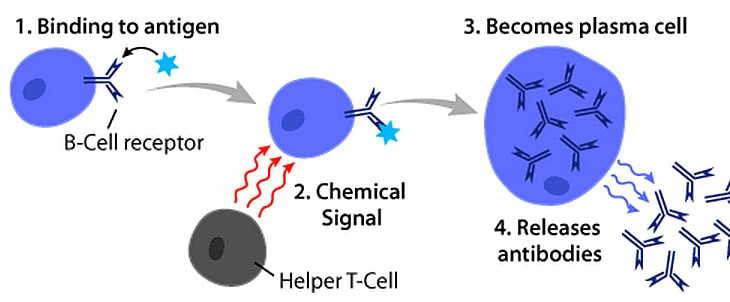
Choice A, Natural killer cells, is not the correct answer because natural killer cells are a type of white blood cell that play a major role in the host-rejection of both tumors and virally infected cells.
Choice B, Cytotoxic T-cells, is not the correct answer because cytotoxic T-cells are a type of white blood cell that kills cancer cells, cells that are infected (particularly with viruses), or cells that are damaged in other ways.
Choice D, Helper T-cells, is not the correct answer because helper T-cells are a type of white blood cell that play an important role in the immune system by helping other white blood cells fight infections.
Correct Answer is B
Explanation
The atomic number of an element represents the number of protons in the nucleus of an atom of that element.
Since lithium has an atomic number of 3, it has 3 protons in its nucleus.
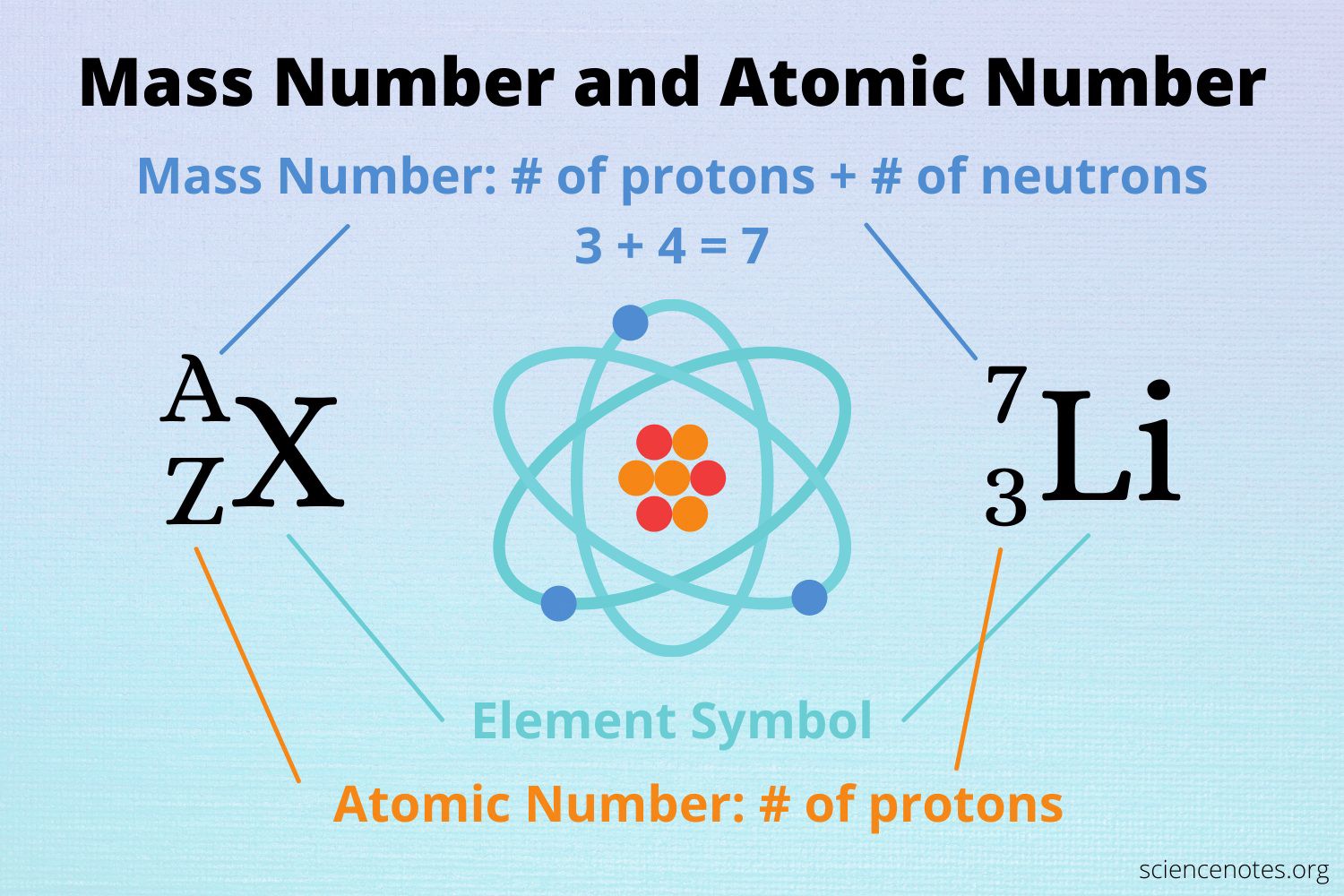
Choice A is not correct because 7 is the mass number of lithium, not the number of protons.
Choice C is not correct because 12 is not the atomic number or mass number of lithium.
Choice D is not correct because 4 is not the atomic number or mass number of lithium.
Correct Answer is D
Explanation
Genes are used in the process of DNA sequencing to determine the order of nucleotides in a DNA molecule.
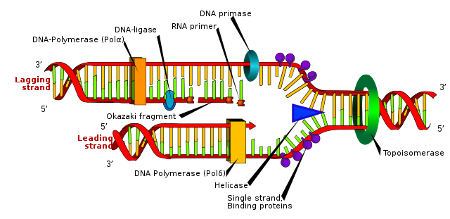
Choice B.
Blood types is not the correct answer because blood types are determined by the presence or absence of specific antigens on the surface of red blood cells and are not directly related to DNA sequencing.
Choice C.
Hormones is not the correct answer because hormones are chemical messengers produced by glands in the body and are not directly involved in DNA sequencing.
Choice D.
Genes is the correct answer because genes are used in the process of DNA sequencing to determine the order of nucleotides in a DNA molecule.
Correct Answer is D
Explanation
Testosterone is classified as an androgen hormone.
Androgens are a type of sex hormone that primarily regulates the development and maintenance of male characteristics, such as body hair growth, muscle mass, and deepening of the voice.
Testosterone is produced primarily in the testes in males and in smaller amounts in the ovaries and adrenal glands in females.
Option A, estrogen, is a female hormone that regulates the development of female sexual characteristics, such as breast growth and menstruation.
While estrogen and testosterone are both steroid hormones and can be converted to one another in the body, testosterone is not categorized as estrogen.
Option B, progestin, is a synthetic form of the hormone progesterone.
Progesterone is a female hormone that plays a role in the menstrual cycle and pregnancy.
Testosterone and progestin are not related, and testosterone is not categorized as progestin.
Option C, aldosterone, is a mineralocorticoid hormone that regulates salt and water balance in the body.
It is produced in the adrenal gland and plays a role in regulating blood pressure.
Testosterone and aldosterone are not related, and testosterone is not categorized as aldosterone.
Correct Answer is B
Explanation
Electrophoresis is the most useful laboratory method for separating genomic DNA fragments by size.
Electrophoresis is a technique that uses an electric field to separate charged molecules, such as DNA fragments, based on their size and charge.
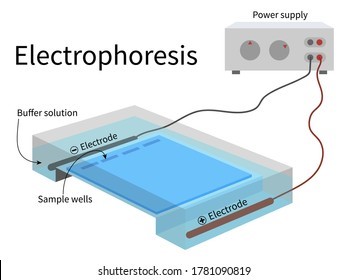
Choice A is not correct because titration is a laboratory method used to determine the concentration of a solution.
Choice C is not correct because filtration is a laboratory method used to separate solids from liquids.
Choice D is not correct because spectrophotometry is a laboratory method used to measure the absorbance of light by a solution.
Correct Answer is C
Explanation
Bag mass change is the dependent variable in this experiment.
In an experiment, the dependent variable is the variable that is being measured and is expected to change in response to changes in the independent variable(s).
In this case, the bag mass change is being measured and is expected to change in response to changes in the independent variable (sucrose concentration).
Choice A is incorrect because duration is not a variable in this experiment.
Choice B is incorrect because temperature is not a variable in this experiment.
Choice D is incorrect because sucrose concentration is an independent variable, not a dependent variable.
An independent variable is a variable that is manipulated by the experimenter to see how it affects the dependent
Correct Answer is D
Explanation
The polarity of water molecules explains its solvent abilities for certain substances.
Water is a polar molecule because it has a partial positive charge on one end and a partial negative charge on the other end due to the unequal sharing of electrons between the oxygen and hydrogen atoms.
This polarity allows water to dissolve other polar substances and ionic compounds.
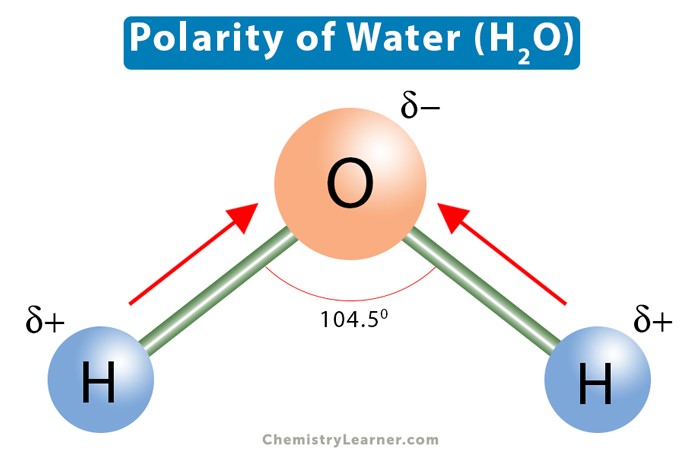
Choice A.
Kinetic energy of liquid water molecules is not the correct answer because kinetic energy refers to the energy of motion and does not directly explain water’s solvent abilities.
Choice B.
High specific heat is not the correct answer because specific heat refers to the amount of heat required to raise the temperature of a substance and does not directly explain water’s solvent abilities.
Choice C.
High surface tension is not the correct answer because surface tension refers to the cohesive forces between liquid molecules and does not directly explain water’s solvent abilities.
This question was extracted from the actual TEAS Exam. Ace your TEAS exam with the actual TEAS 7 questions, Start your journey with us today
Visit Naxlex, the Most Trusted TEAS TEST Platform With Guaranteed Pass of 90%.
Money back guarantee if you use our service and fail the actual exam. Option of personalised live tutor on your area of weakness.
